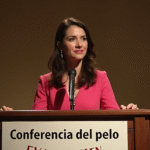The Focus on Office Care Over Operations
Juan Domínguez, the Director of Capital Humano at Alpura, highlighted during the People Day 2025 event hosted by Buk that companies have primarily focused on office care rather than operational aspects. He emphasized that the Human Resources field still lacks a crucial discussion: flexible working models suitable for all employees, including those unable to work remotely.
Relevance of Latin American Positions
Domínguez pointed out that in Latin America, many positions require physical presence, making the discussion more about well-being and flexibility rather than remote work, which only applies to 17% of the population. He advocated for shifting the debate towards flexible work models, such as reduced working hours, staggered schedules, and leave policies.
Hybrid Work: A Competitive Advantage and Its Challenges
Jehovana Torres, the Director of Human Resources at LVMH, acknowledged that hybrid work models have become a competitive advantage for companies. However, she also noted that this setup presents its own set of challenges.
“Just as we enjoy the best of both worlds, we also face challenges inherent to both,” Torres explained. LVMH’s success with hybrid models, she said, stemmed from leader and employee training alongside the creation of new policies focused on upskilling and maintaining productivity, flexibility, and well-being in remote work settings.
Challenges of Returning to Office Work
Nicole Wallentin, the Talent Acquisition Leader at Amazon, shared that transitioning back to office work presented its own hurdles. “We realized we had forgotten how to socialize,” she said, adding that fostering collaboration, teamwork, and idea generation posed significant challenges.
However, Wallentin highlighted that one strength of in-person work is the quicker resolution of issues. “What used to take a week now can be resolved in minutes by simply visiting the colleague’s office,” she explained.
Lessons from Hybrid Models
The HR leaders also shared their experiences in maintaining team cohesion within remote environments.
Maintaining Team Connection
Torres mentioned that to sustain team connections, they established rituals. These practices not only facilitate integration among team members but also boost productivity during high-performance periods.
Domínguez emphasized that organizational culture rituals have enabled more effective workspaces without sacrificing flexibility. He stressed the importance of advancing flexible work models centered around well-being.
Key Questions and Answers
- What is the main focus of the HR agenda? The discussion revolves around creating flexible work models that cater to all employees, including those unable to work remotely.
- Why is the discussion on flexible working models crucial in Latin America? Given the high prevalence of positions requiring physical presence, the debate should focus on well-being and flexibility rather than remote work.
- What challenges do hybrid work models present? Despite being a competitive advantage, hybrid models also bring challenges such as maintaining social connections and fostering collaboration.
- How do companies address issues in hybrid work settings? By implementing training programs for leaders and employees, as well as creating new policies centered on upskilling and maintaining productivity, flexibility, and well-being in remote work.
- What are some lessons learned from hybrid models? Establishing rituals to maintain team connections and leveraging organizational culture rituals for effective workspaces without compromising flexibility are key takeaways.






